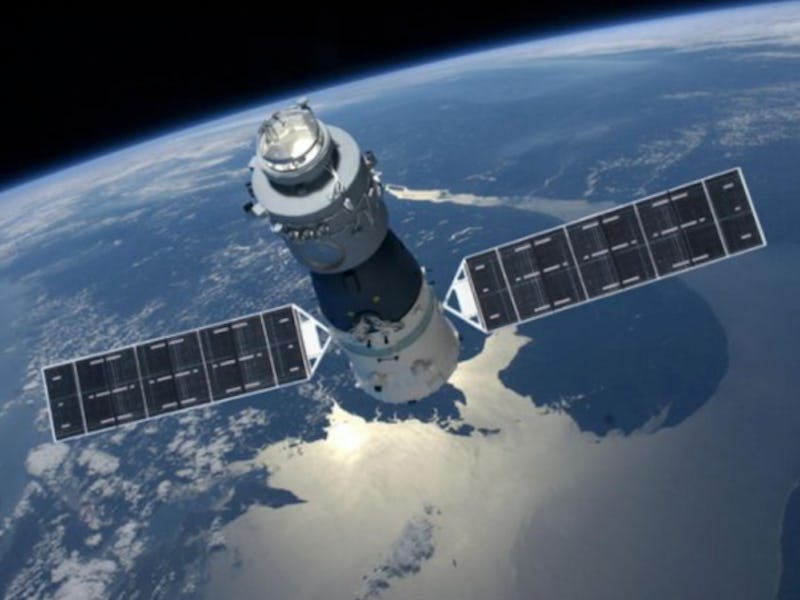Tiangong-1 Reentry: ESA Estimates New Location and Time for China's Falling Space Station

The reentry clock ticks down for the Tiangong-1. Updated predictions from scientists give a better idea of when and where the Chinese space station will make its way back to Earth.
The European Space Agency (ESA) updated its reentry forecast for the Tiangong-1. It shifted the forecast window to 7:25 p.m. Eastern on April 1 to the early morning of April 2. Location for reentry will be anywhere between 43 degrees north and 43 degrees south latitudes, most likely above southwest Europe. The agency expected a recent high-stream of Sun particles to affect the planet’s geomagnetic field, leading to a reentry window change, but that did not have an effect. However, even with calmer space weather, the forecast is still likely to change.
Tiangong-1 in final orbit
“At no time will a precise time/location prediction from ESA be possible,” the agency said on its website. “This forecast was updated approximately weekly through to mid-March, and is now being updated every day.”
China launched the Tiangong-1, called the “Heavenly Palace,” in 2011. The unmanned space station was the start of the country’s program to place a larger station in 2023. It was retired in March 2016 after three missions where spacecrafts docked with the station. The “palace” began its fall from the “heavens” to Earth once China lost control of it.
For parts of the world, this Easter will include a cosmic light show in the night sky when the Tiangong-1 reenters the Earth’s atmosphere. Most of the 19,000-pound station will burn as it plummets to the ground while the rest will most likely land somewhere in the ocean.
There is an infinitesimal chance that parts of the station will hit land. If it does, the Aerospace Corporation recommended to not touch or inhale any of the vapors coming from the burnt debris.